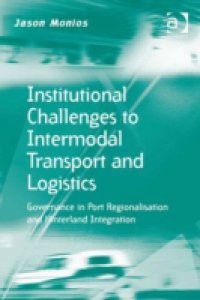While the operational realities of intermodal transport are relatively well known, the institutional challenges are less well understood. This book provides an overview of intermodal transport and logistics including the policy background, emerging industry trends and academic approaches. Establishing the three key features of intermodal transport geography as intermodal terminals, inland logistics and hinterland corridors, Jason Monios takes an institutional approach to understanding the difficulties of successful intermodal transport and logistics. Key areas of investigation include the policy and planning background, the roles of public and private stakeholders and the identification of emerging strategy conflicts.Substantial empirical content situates the theoretical and practical issues in real-world examples via three detailed case study chapters (covering the USA, UK and Europe), making the book useful to students as well as practitioners desiring an understanding of how intermodal transport and logistics work in practice. The identified challenges to intermodal transport and logistics are used to demonstrate how competing port and inland strategies can inhibit the necessary processes of integration required to underpin successful intermodal transport. The book concludes with a look at the future of institutional adaptation that may enhance the capacity of freight actors to engage with intermodal transport developments.





 7 (1)
7 (1) 










